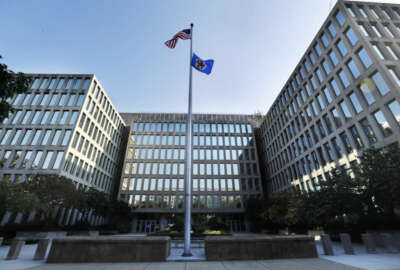News got you down? Look at the good people
You can't make bad news go away. But by focusing on people doing good work, you can keep the cable TV anxiety at bay
As an advisor to my alma mater’s news magazine, I get a view into what concerns contemporary college students. They really worry, too. Policing, domestic abuse, the often toxicity of social media, even space debris — they’re all on the minds of campus denizens.
I recall in my collegiate days great interest in the 1976 election. Richard Nixon had resigned only a couple of years earlier. The country had seemed chaotic then, too. One day, out on a photojournalism assignment, I was curbside downtown among a small gaggle of people. A cab pulled up and out popped Jimmy Carter, then an obscure candidate for president. We stared at one another for a second, giving one another a “who the heck are you?” look, before I got a great shot with my Nikon F.
One recent story in the school publication concerned news itself. It contained this subhead: NEWS IS STRESSFUL. The writer stated, “You shouldn’t be losing sleep because of the news, because that can affect your physical and mental well being.”
Well, no you shouldn’t, and it can.
As someone in the news business, even I find the news can be wearing at times. The nation is in paroxysms of ire over everything from if and how to spend another couple of trillion dollars worth of debt, to whether the toy formerly known as Mr. Potato Head should retain its honorific. Not to minimize the importance of these debates, but there is a lot else going on.
It doesn’t make you a hopeless Pollyanna to seek out the good, or, in my case, to feature people who haven’t tried to smuggle small birds into the country by squeezing them into hair curlers (CBP retained the finches and sent them to the USDA Veterinary Service. It sent the passenger back to Guyana, where he might face a spouse angry over missing curlers). And you don’t have to harbor illusions about the government to find inspiration in those genuinely trying to do good things.
Good news and bad news happens. What is most interesting, though, and what can help keep back, not the news but rather the news funk, is the people. Your colleagues.
Focusing on individuals, I find, helps me keep the larger chaos in perspective. And they’re fun to talk to. Just a couple of recent conversations I’ve had the pleasure of having recently:
The Navy has a continuing need to better understand the behaviors of radio frequency waves, how they interact with the atmosphere and other sources of radiation, and how this all might advance communications and radar performance. A civilian physicist at the Naval Research Laboratory helped. He was part of a team that discovered a way to use interferometer and other technologies to pinpoint the source of mysterious radio pulses coming from a distant galaxy. Matt Kerr won a prestigious prize he hadn’t heard of until after his discovery. How great is that?
Or what about those 50 TSA employees that joined the “surge force” to help FEMA administer vaccination sites? They’re doing 12-hour shifts in distant places, checking people in for their shots, and making sure no one slumps to the floor afterwards.
Public service can motivate people to support it even after they retire.
John Kamensky, whose federal service dates to the Clinton administration’s reinventing government initiative, spent a second career at the IBM Center for the Business of Government. He retired the other day. After decades of policy work and research on how to make government perform better, he’s still optimistic about the prospects for a strong, politically neutral federal workforce and for well-functioning programs and agencies.
Imagine what retired CENTCOM commander and Army 4-star Joe Votel must’ve seen. As CEO of a non profit, Business Executives for National Security, he’s still pushing for better crises response execution by government at all levels. The nation has stumbled through dealing with the coronavirus crisis. In some ways it’s still stumbling. Votel told a Senate subcommittee, the government actually has a pretty good crisis response policy, but it’s mediocre at executing on it. How to fix that is the essential message of the BENS report.
Regular readers know I like cars, motorcycles and airplanes. They intersect with my interest in science and technology work that so many feds do. So I was gratified to talk to Dr. John Holladay of the Pacific Northwest National Laboratory, guiding a program to turn sewage and food garbage into diesel fuel or jet fuel, then commercialize the process. That seems like a good idea. Then there’s Marina Sofos at the Advanced Research Projects Agency-Energy. She’s overseeing academic grants for teams to find ways of using vehicle electronic controls to stretch mileage — and in gas, hybrid and electric cars.
News gettin’ you down? The antidote might be on your next Zoom call.
Nearly Useless Factoid
By Alazar Moges
A 5-by-7 foot book featuring images of the ancient life and culture in the South Asian country of Bhutan put together by a group of students at the Massachusetts Institute of Technology is the largest book in the Library of Congress.
Source: Library of Congress
Copyright © 2025 Federal News Network. All rights reserved. This website is not intended for users located within the European Economic Area.
Tom Temin is host of the Federal Drive and has been providing insight on federal technology and management issues for more than 30 years.
Follow @tteminWFED





